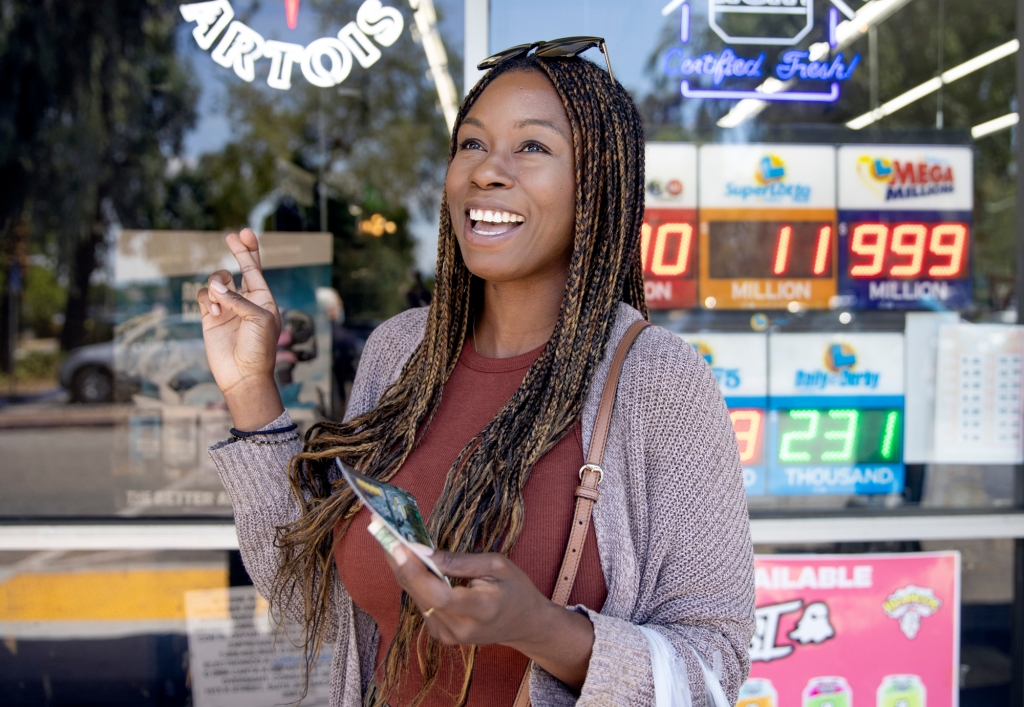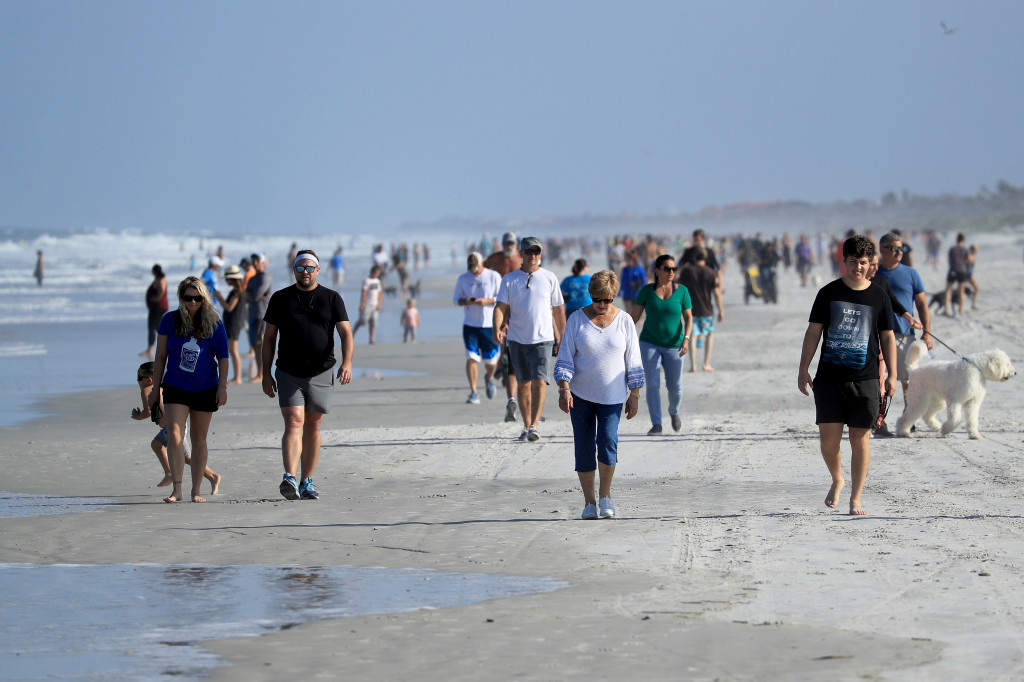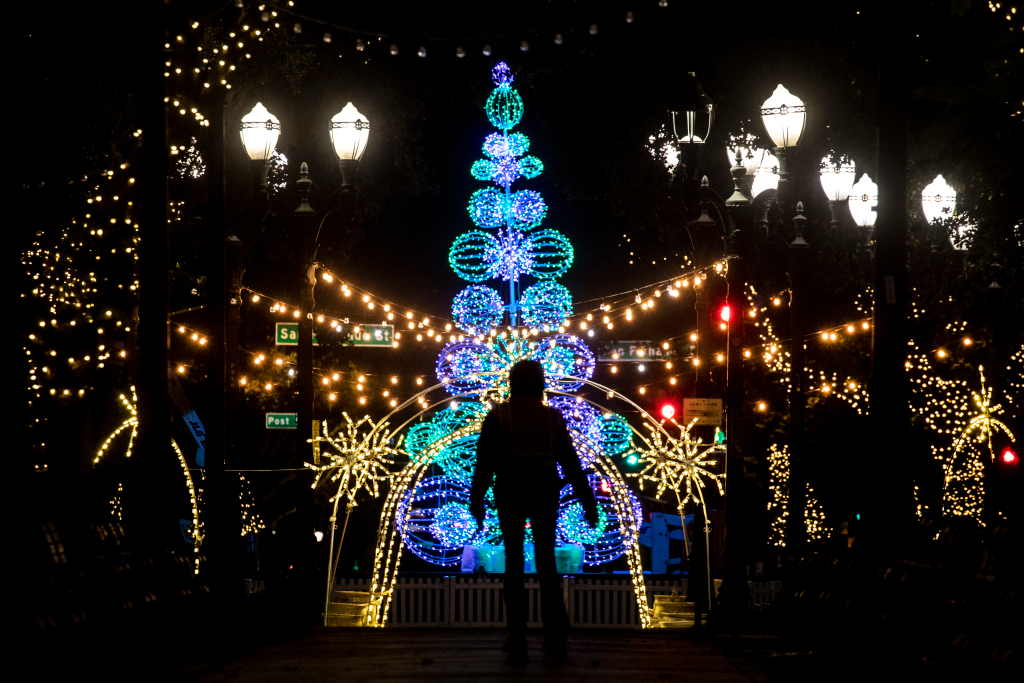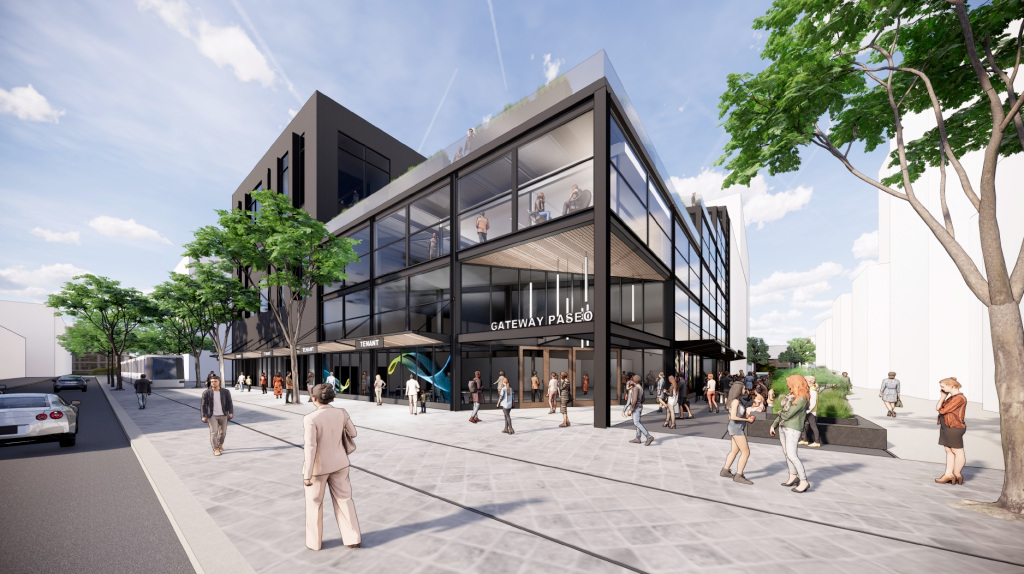The Mega Millions jackpot just keeps climbing. The top prize for Friday night’s drawing has reached $1.1 billion, the fifth largest lottery jackpot ever, and millions across the country are flocking to their local gas stations and liquor stores for a shot at imponderable overnight wealth.
For the superstitious in San Jose, there is one must-stop ticket dispensary to visit: Ernie’s Liquors on South White Road, which in 2018 sold one of the three Mega Millions winning tickets in the record $1.5 billion jackpot to a pool of Wells Fargo coworkers.
These days, the line of hopefuls regularly snakes out the door and up to the cash register where a novelty check for $550 million, commemorating the 2018 win, hangs for all customers to worship.
Since the jackpot hit, Richard Ramirez of San Jose has made a lottery excursion to Ernie’s with his grandfather a weekly ritual.
“He’s pretty superstitious,” Ramirez said, gesturing to his grandfather, who was gawking at the commemorative check. “He said this is our best shot to win big.”

The first thing he would do if he wins? It’s kind of, well, mundane. He’d pay off his student loans and take care of his family. But similar dreams predominate for many regular lottery goers, who see Friday night’s one-in-302,575,350 shot as chance to break free from debt and economic woe. Yet when the jackpot figure gets this high, it can rope in an entirely new demographic, according to Robert Pagliarini, author of “The Sudden Wealth Solution” and president and chief financial advisor at Pacifica Wealth Advisors Inc. in Irvine.
“At these levels, you have a whole new population that comes in and starts playing,” Pagliarini said. “You can forget any assumptions you have about who buys lottery tickets when it starts getting national attention like this.”
In California alone, as of Thursday, $221.6 million worth of tickets have been sold during since Mega Millions last had a winner April 15. By July 22, California had accounted for 14% of all national Mega Millions sales. The rise in popularity is exponential, said Carolyn Becker, deputy director of the California Lottery — the higher the jackpot gets, the more people buy tickets. The top prize is now rising by more than $100 million every day.

Larisa Karvon, a mental health therapist in San Jose, doesn’t normally buy lottery tickets, but she couldn’t stay away from a chance this big. She works just blocks away from Ernie’s and decided to make the short walk over to try her luck. If she wins, Karvon said she would put the money back into what she cares about most, helping children in the community.
“I’ve worked in situations where you see children whose home life is either non-existent or it’s really bad,” Karvon said.
Ernie’s customers aren’t the only ones dreaming. Kewal Sachdev, Ernie’s owner, hopes that there’s truth to the superstitions about his store.
“It would be magic,” he said, imagining the possibility of another win.
He reaped a $1 million windfall as the owner of the store who sold the 2018 winning ticket. Four years later, Sachdev still mans the cash register at Ernie’s every day, his tall figure and wide smile a fixture for long-time customers who know him by name.
When the jackpot gets this high, there are too many customers for Sachdev to count. “We’ve had people come from out of state because they think this store is lucky,” he said. “I could never have expected this.”

Still, the frenzy is not limited to Sachdev’s storefront. A woman entered The People’s Market & Liquor store in Pittsburg about 9 a.m. on Wednesday morning, and pulled out the cash.
“She wanted $50 of the Mega Millions,” Mandeep Singh said. “She told me she was buying $50 worth of them from every store in the area.”
Such is the rush sparked by a billion-dollar opportunity.
“It’s crazy,” Singh said. On the day before Tuesday’s drawing, “I sold $3,000 worth of them.”
Most buyers are realistic, understanding that the chances of winning are close to none. That still doesn’t take the fun out of it, though.
“My view, I spent $15 on a movie ticket to be entertained for two hours,” said Alan Edelman, 52, of Fremont. “I spend $5 in the lottery to dream of cars, vacations and homes. It’s a good trade off.”
Friday night’s jackpot has grown to 10 figures after turning over again and again without a winner — 29 times in all.
When a winning ticket is eventually sold, the winner (or winners) will have a crucial decision to make — take the winnings in a lump sum or as an annuity? If a single winner elects to take the money up front, they would forfeit nearly half of the jackpot, and walk away with “only” around $648 million at the current prize size. The annual payoff option would give them about $30 million per year until the full amount is earned.
Though taking the money up front may eventually be more valuable if invested correctly, Pagliarini strongly cautions against it.
“What we know about lottery winners is that many of them spend down their money, they lose it all, they invest in things they probably shouldn’t, and maybe they give away too much, they blow their jackpot winnings,” said Pagliarini, who frequently works with lottery winners. “When you take the lump sum and spend it all, it’s over. The game has ended.”
Until the jackpot winner is announced, lottery hopefuls will continue watching the top prize soar. According to Becker, California residents should be excited about that possibility. The biggest beneficiary of the lottery proceeds is actually public education. This sequence alone has raised $88.6 million for California public education, and that figure will continue to rise.
“Until someone wins,” Becker said, “this is basically a giant community fundraiser for a good cause.”











